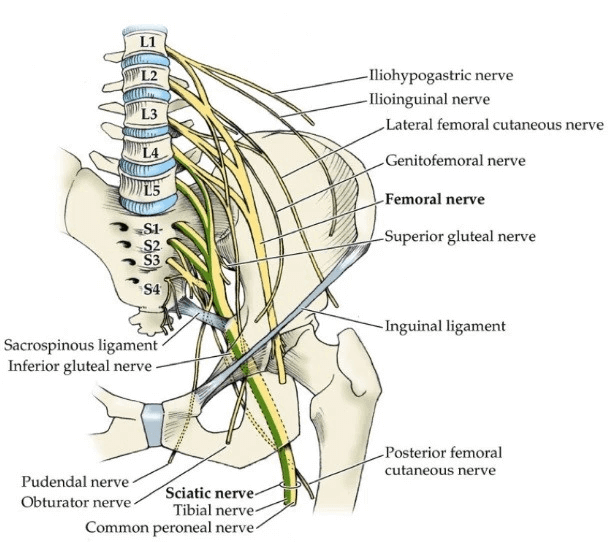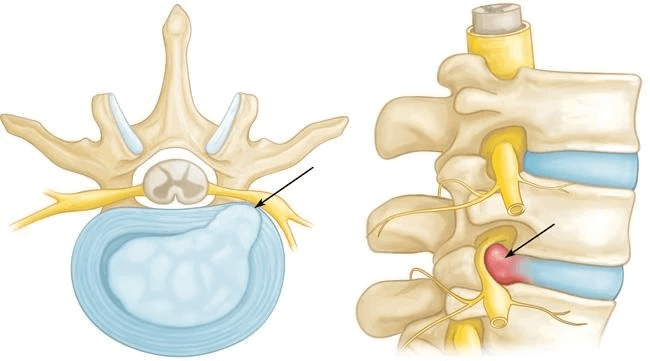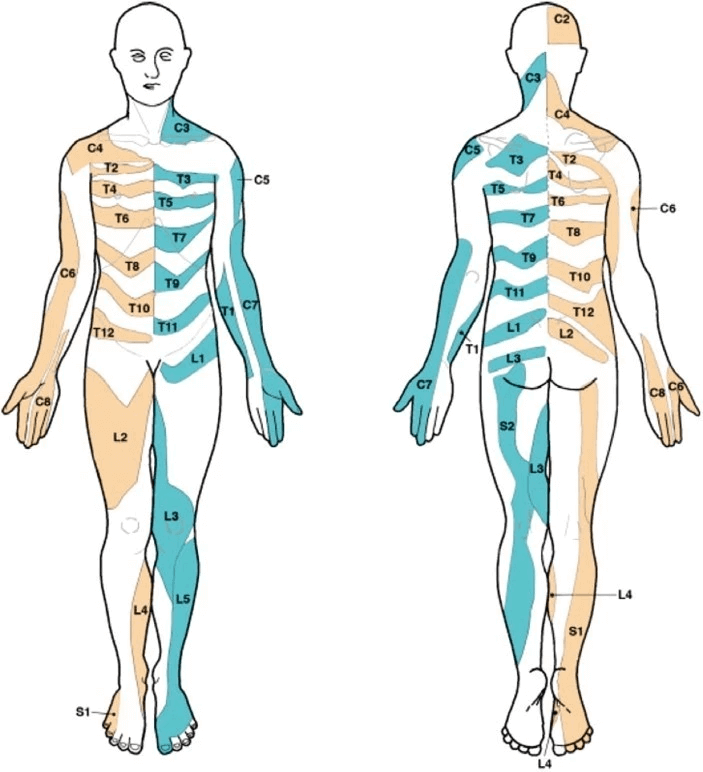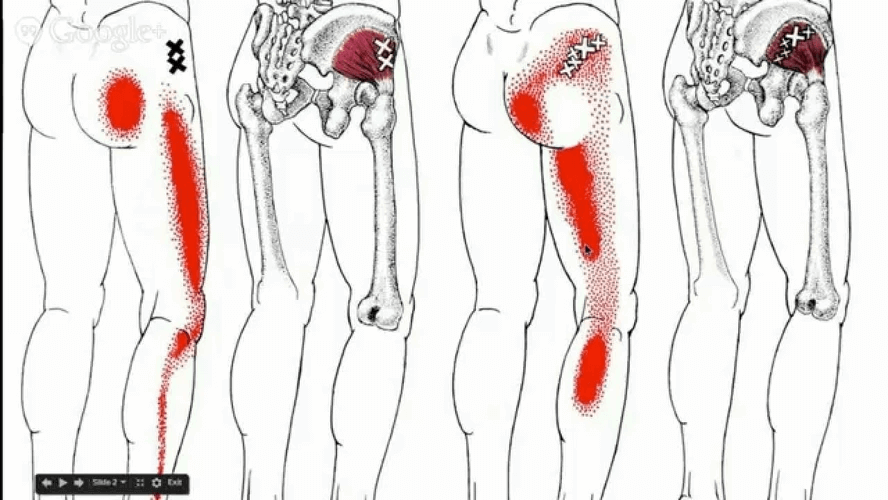I have a shooting pain down my leg. Is it sciatica?
Overview

We’ve all heard people saying they have or have had sciatica which they describe as a bad shooting pain down the leg due to sciatic “nerve entrapment”. Even though it has been scientifically and clinically agreed to call “Sciatica” to all leg shooting pains, not all pains that shoot down the legs are related with a compression of the sciatic nerve.
What is Sciatic Nerve ?
Sciatica term comes after the “Sciatic nerve” term, which is a nerve that arises from the mesh of the small nerve roots (lumbo-sacral plexus) that leave the spinal cord through small holes between the vertebrae (Figure 1).
Nerves are like computer cables that carry information from the brain to the muscles/body and from the body to the brain, therefore if a nerve gets compressed it’s like someone is “stepping on the cable”, changing the information the brain gets in the end, giving us the impression the problem is in the leg, rather than along the “information pathway”.
What Causes Sciatic Nerve Compression?

The nerve roots and the sciatic nerve itself (as any other nerve that runs down the leg, such as the femoral, obturator nerves) can be compressed along their path from the spine all the way down the leg. The main causes of entrapment for the nerve roots is the disc bulge or herniation, usually compressing one of the side nerve roots as it goes through the spine (figure 2), but this can also occur due to joint stiffness or spine wear and tear. The sciatic nerve is commonly compressed close to a deep buttock muscle called the “piriformis” or in some non-elastic scar tissue resulting from a chronic hamstrings tear.

Depending on the location in the nerve path where the compression occurs, the area of the leg where your pain/reduced sensation is felt will vary. These areas are schematized in maps (figure 3), but there is still significant room for variability between different people. Apart from informing your brain of the leg sensitivity, the nerves are also responsible for activating your muscles, therefore nerve compression may also lead to weakness of the affected leg.
Your physio will be able to understand better where the problem is by doing a series of tests and by following the maps with the location of the symptoms.
There are, however, other sources of leg pain, such as trigger points.
What Are The Trigger Points For Sciatica?

Trigger points are functional points that every muscle has which are inactive in normal circumstances. When the muscle is overloaded due to poor body mechanics or repetitive load/use, they will become active being responsible for sharp pain on palpation of the actual trigger point and an associated area of pain which can be in the vicinity or away from the point. Some hip muscles trigger points can trigger leg pain and mimic some sciatic symptoms (figure 4)
Conclusion
Thus, not all leg pains are related with nerves or spinal conditions and some of them are easily improved and managed with some exercises and manual therapy.
References:
- Ryan M, Jones H, De Vivo D, (2014), Neuromuscular Disorders of Infancy, Childhood and Adolescence (2nd Edition), Elsevier, ISNB 978-0-12-417044-5
- Abu Naser, S. S., & ALmursheidi, S. H. (2016). A Knowledge Based System for Neck Pain Diagnosis. World Wide Journal of Multidisciplinary Research and Development (WWJMRD), 2(4), 12-18.
- Apok V, Gurusinghe NT, Emsley HCA, Mitchell JD. (2011), Dermatomes and dogma. DERMATOMES AND THEIR SIGNIFICANCE 3 H C A Emsley Pract Neurol. 2011;11:100–105.
- Travell JG, Simons DG. (1983), Myofascial Pain Dysfunction: The Trigger Point Manual.Williams & Wilkins
